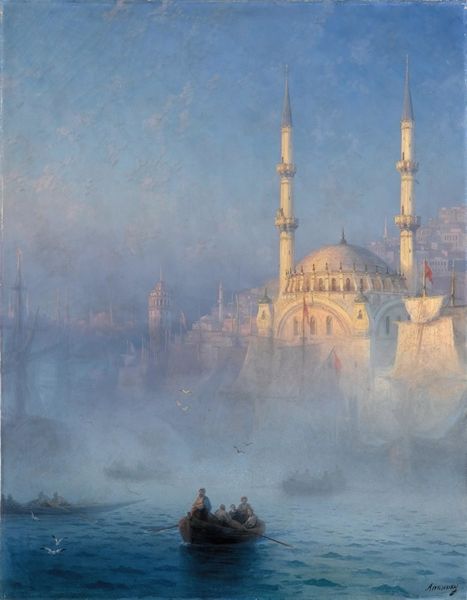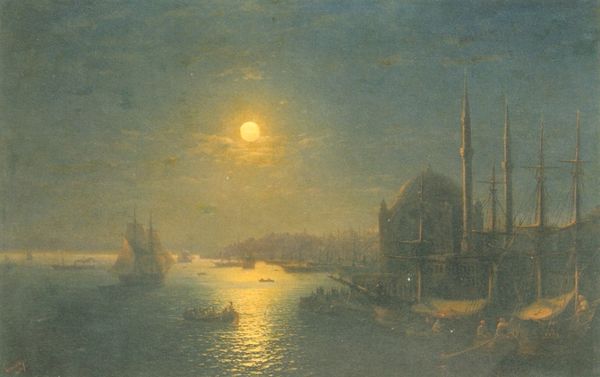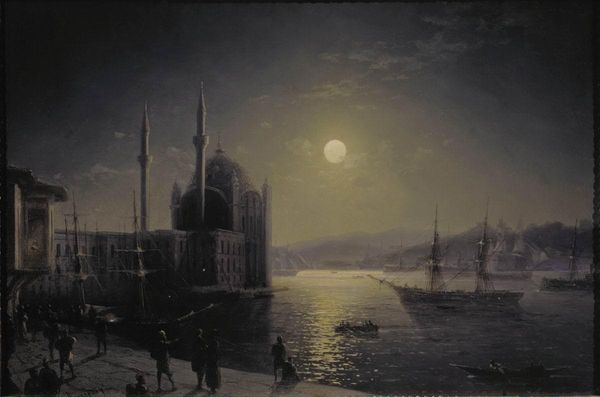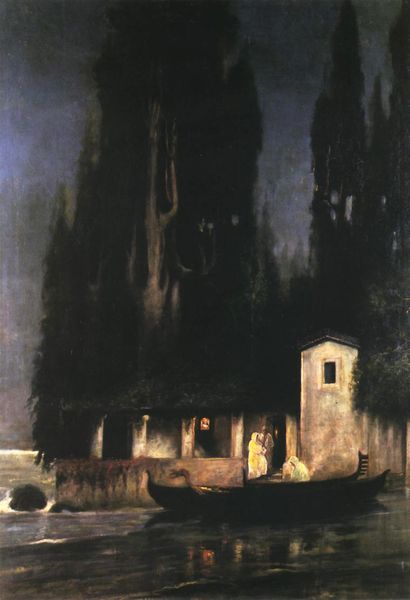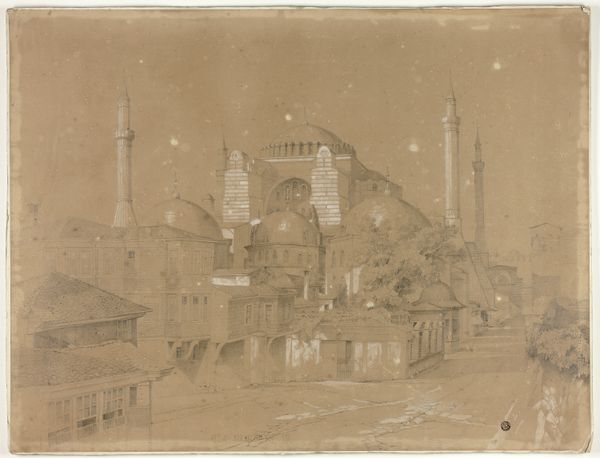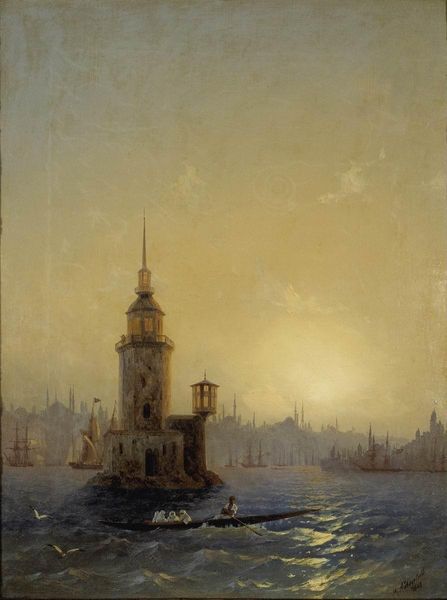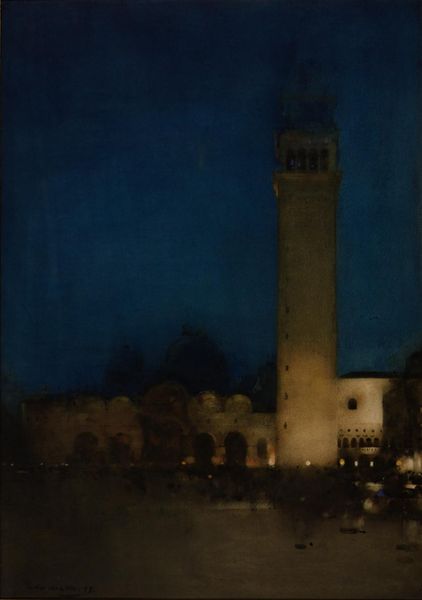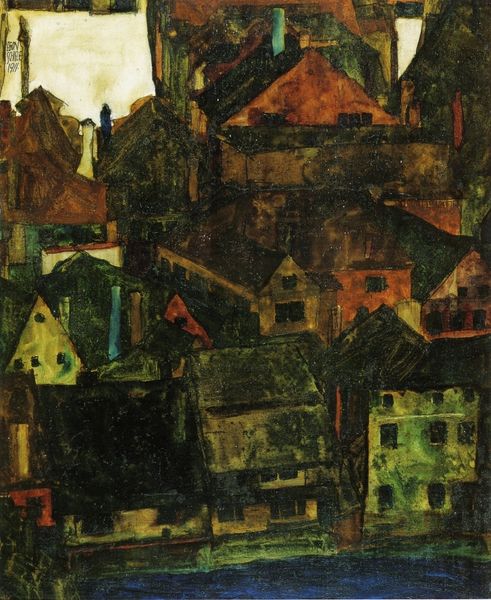
#
night
#
boat
#
abstract expressionism
#
abstract painting
#
ship
#
house
#
impressionist landscape
#
painted
#
possibly oil pastel
#
derelict
#
ocean
#
underpainting
#
paint stroke
#
water
#
painting painterly
#
mixed media
#
sea
#
building
Copyright: Public domain
Curator: Aivazovsky’s “Night in Constantinople,” created in 1886, presents an entrancing view of the city at night. What are your initial thoughts? Editor: It’s dominated by a subdued palette, mainly blues and blacks, yet there’s this luminous, almost dreamlike quality that permeates the canvas. The way the architecture and the water blend into one another is striking. Curator: Aivazovsky, famed for his seascapes, frequently depicted coastal cities as symbolic gateways. He captured not only their physical attributes, but their political and cultural significance in Imperial Russia’s worldview. Constantinople, then the heart of the Ottoman Empire, held a particular fascination for Russian society. Editor: Focusing on its pure aesthetics, the artist's masterful manipulation of light is evident. Note how he captures reflections on the water, contrasting dark and light areas to create a serene but palpable atmosphere. It’s the perfect balance, making the whole painting incredibly cohesive. Curator: And what appears to be a quiet, almost contemplative scene carries implications of Russian imperial ambitions. Paintings of Constantinople held an important place in shaping public perception in Russia. Editor: Indeed, looking at the paintwork, Aivazovsky’s strokes are loose, almost impressionistic, which enhances that ethereal effect. His layering technique gives texture, and by playing with reflections and blurring lines, he elevates the city into something sublime. Curator: Consider the social climate in Russia in the late 19th century. Paintings like these, commissioned or purchased by members of the aristocracy, functioned as silent yet powerful declarations of Russia's place on the world stage. They evoked a certain type of exoticism tied to military or diplomatic victories. Editor: Seeing through the cultural lens you just outlined gives new meaning to the work as a signifier of geopolitical aspirations. Nevertheless, on a purely visual plane, it’s a testament to Aivazovsky's skill. The mood, that blending of darkness and luminosity, the technical flair – it's beautifully executed, regardless of context. Curator: Precisely, those technical abilities become intertwined with, and perhaps even a tool of, a wider ideological project. Editor: Agreed, and considering both of our readings here illuminates how "Night in Constantinople" speaks both to the observer's emotions and their intellect, which is why it continues to enchant.
Comments
No comments
Be the first to comment and join the conversation on the ultimate creative platform.
